Industry leaders gathered to discuss requirements for the Built Environment Systems Review, commissioned by the Infrastructure Client Group with government backing to establish performance baselines and drive change across the £540bn UK infrastructure pipeline
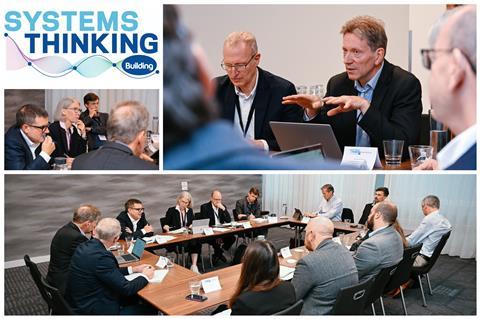
With the establishment of the National Infrastructure and Service Transformation Authority (NISTA) this year and the publication of the 10-year infrastructure strategy, there is a clear appetite for addressing the UK’s long-term strategic ambitions, from reaching net zero to rebalancing regional disparities. But the question remains: what is the best way to get the most out of our built environment?
In the new year work will get under way on a review designed to “establish a baseline for the performance of the UK’s built systems, provide solid evidence for the economic value of applying systems approaches to the built environment, and recommend practical steps for positive industry change”.
The Built Environment Systems Review will be commissioned by the Infrastructure Client Group, representing the UK’s largest owners and operators of social and economic infrastructure, with government backing.
It is hoped that insights and resulting recommendations will help organisations right across the value chain to:
- Tackle “generational issues” including net zero, resilience, nature recovery, security and social equity
- Work towards better-defined economic, social and environmental outcomes
- Align investment and interventions to achieve those outcomes
- Improve the performance and effectiveness of both existing assets and new projects
- Better address persistent blockers to industry productivity and efficiency – something that is essential for delivering the UK infrastructure pipeline, currently valued at £540bn to 2035 and likely to swell to over £725bn.
The need for the review was set out by the Built Environment Connective in its paper Connect to Change, published in July. As the review gears up to start, the Connective and Building, with support from consultant Buro Happold, organised a roundtable discussion as part of Building’s Building the Future Conference to explore key questions and requirements. Centred on six key questions, the discussion focused on how systems thinking can transform industry and government decision-making for the better.
Around the table
Chair: Alexandra Bolton, independent consultant, Curgenven Wolfe, and founder, Built Environment Connective
Laura Doanova, policy executive, Association for Consultancy & Engineering
Barry Gibbs, director of GB Construction, Willis
Fergus Harradence, deputy director, infrastructure and construction, Construction, Infrastructure and Energy Directorate, Department for Business & Trade
Marie-Claude Hemming, policy director, Association for Consultancy & Engineering
Ron Lang, transformation adviser to the National Infrastructure and Service Transformation Authority, and regional director, AtkinsRéalis
Jeff May, deputy chief executive, Construction Products Association
Ges Rosenberg, research fellow in systems thinking/cities, University of Bristol, and academic community lead, Built Environment Connective
Gavin Summerson, head of construction and infrastructure, Connected Places Catapult
Colin Taylor, chair of the South West Infrastructure Partnership
Alasdair Young, global energy transition leader, Buro Happold
1. Do we understand the built environment as it already exists, how it’s performing, and how that relates to the outcomes we want from it?
“We have understandings of the built environment, but not an understanding,” said Ges Rosenberg. “Across the built environment, organisations create pockets of data,” for example on air quality, housing condition, public health, carbon emissions or social inclusion.
“But that data is incomplete and it is rarely connected up. The parts of the picture that data enables us to see are interesting and useful. Overall, though, we don’t really understand the built environment, or what we could achieve by understanding it better.”
Rosenberg pointed to a study called TRUUD (Tackling Root Causes Upstream of Unhealthy Urban Development), published in September by a consortium of universities and funded by the UK Prevention Research Partnership. Data gleaned from diverse sources showed the combined health and economic impacts of poor housing, food insecurity, low income and social deprivation lead to avoidable illness and injury, pressure on the NHS and social services, and reduced educational attainment.
The data fed into TRUUD provided evidence to support investment in improving housing, as well as a raft of other urban factors affecting people’s quality of life and life chances. “It gives an evidenced basis and toolset for shaping policy and strategy,” Rosenberg said.
Clearly defined outcomes give purpose to information gathering – “what do we want to understand and why”.
But right across the built environment there is a fundamental weakness, suggested Fergus Harradence. “We have owners who don’t understand the extent and functionality of their systems, or how things integrate. Owners have a critical role to play in changing attitudes to data capture and management.”
That is partly because the great majority of the built environment consists of existing assets and systems, some centuries old.
Whether maintenance or new-build, every project creates an opportunity to capture information that can potentially improve owners’ and suppliers’ understanding of the existing built environment, and how best to integrate new assets into it. “Right across the supply chain, we work in and on the existing built environment,” said Marie-Claude Hemming.
“We have a poor grasp of the legacy systems we’re dealing with and it’s unrealistic to understand everything. But we need to use each intervention as an opportunity to understand them better.”
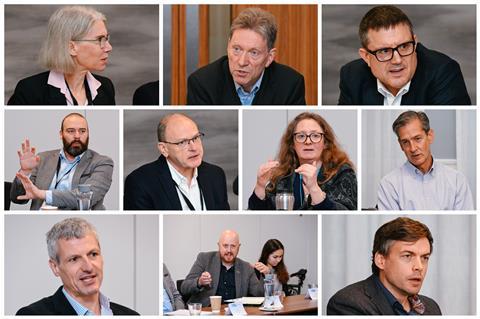
2. Do we believe we can get better performance and value from the built environment, in terms of outcomes relative to money spent?
“We tend to think in terms of projects, and keep being seduced by the thought of grand projets,” said Alasdair Young. “As a result we routinely fail to join up investments in the public realm.” Project rather than systems focus restricts the benefits each project has and regularly results in adverse knock-on effects in the built, environmental, economic and social systems it is nested in.
Project focus combined with poorly defined outcomes results in missed opportunities to reduce carbon, develop resilience, improve biodiversity and create places that are healthier and more enjoyable for people. Broader, more inclusive ways of measuring “value” are required. Looking beyond traditional monetary measures will improve the return to investors as well as society.
With Manchester University, Buro Happold is developing a “Flourishing Index” to help set more joined-up objectives and assess performance holistically.
Gavin Summerson urged that attention be paid to “who the built environment performs for. We need to better understand what people want and be more conscious of who the value of investments in the built environment goes to. We need to think about value – outcomes relative to money spent – in terms of the whole of society, the economy and nature.”
Ron Lang noted that the government’s 10-year infrastructure strategy marks a substantial step in this direction. “For the first time, we have a holistic strategy that recognises the need to consider social infrastructure and housing alongside economic infrastructure.”
NISTA, the Treasury unit responsible for the 10-year strategy, is “trying to get departments and industry to think about which bits of the system are best to put money into, to get the outcomes that government wants”, he said..
Value can be improved by viewing activities and outcomes holistically, “rather than each department or system planning its own wish list”.
Jeff May said the industry needs be clearer in how it defines and explains its priorities. “We ourselves need to understand and join up the arguments we’re making to policy-makers, and to articulate them better, so that they’re understood by those spending taxpayers’ money.”
3. What outcomes do we want from the built environment that we’re not getting now?
Who is setting the outcomes? Can people agree what they should be?
Most change initiatives involve different stakeholders, with their own ideas of what good looks like and red lines as to what they will and won’t accept. The difficulty of achieving compromise and agreement can cause initiatives to founder.
The South West Infrastructure Partnership (SWIP) is tackling the challenge “by developing a very high-level vision for the region that nobody can really disagree with”, said Colin Taylor. He spelt thisout as follows:
- A region where infrastructure is the enabler of inclusive prosperity, not just a technical asset
- Resilient to climate change and economic shocks, with systems designed for long-term adaptability
- Digitally connected and socially cohesive, supporting both urban innovation and rural equity
- Rooted in place and identity, drawing on the South-west’s rich heritage while embracing future technologies.
In short, “the South-west is a place where people and nature can flourish in harmony”.
SWIP is a voluntary, collaborative initiative, supported by the Institution of Civil Engineers. It involves central and local government, infrastructure owners and operators, educators, professional institutions and civil society.
Considerable effort has been put into socialising the high-level vision, said Taylor, and it is receiving widespread approval. On that foundation, SWIP is now developing more granular outcomes.
“In general, our industry doesn’t think about people,” he noted. In contrast, SWIP’s vision “starts and ends with people.
“People’s lives intersect with infrastructure. We’re now exploring a portfolio of personas, representing people in different locations across the South-west, to understand how infrastructure can improve their agency and contribute to a better quality of life.”
Taylor called attention to an emerging interdisciplinary field, ecological economics, which explores the relationship between ecological and economic systems, challenging conventional economic models that treat nature and society as externalities. “It provides a framework for examining the before and after effects of changes in infrastructure.”
Attracting investment in infrastructure is an ongoing challenge. “If we can demonstrate that systemic approaches to the built environment drive revenue and improve profitability, we’ll be better able to persuade the Treasury and private investors to make capital available,” said Hemming. “We need to see that link being demonstrated for the circular economy, reducing carbon, developing resilience, industrialised construction, and connecting and integrating the value chain.” Investment cases should also be built for joined-up, systemic approaches to other challenges including industry skills, the procurement of construction equipment and supply of products and materials.
Harradence suggested “the built environment needs a version of the Heilmeier catechism”, which was used by US research and development agency DARPA to assess strategic initiatives. It consists of nine questions:
- What are you trying to do?
- How is it done now, and what are the limits?
- What is new in your approach and why will it be successful?
- Who are the stakeholders and why does this matter to them?
- If successful, what difference will it make?
- What are the risks?
- How much will it cost?
- How long will it take?
- How will progress and success be measured?
The questions are a useful addition to the five-step “theory of change” set out by the Built Environment Connective in Connect to Change, which explains how to approach a “system of interest” and begin the process of changing its behaviour to deliver desired outcomes.
Summerson and Taylor both urged attention to the long term and the big picture. Assets and systems last far beyond their theoretical design lives, and many times longer than investors’ payback periods.
“Methods used to set, pursue and measure outcomes need to understand trade-offs. And they must be clearly focused on an end goal or goals, not just interim objectives like ROI,” said Summerson.
“One of the longstanding issues in the built environment is the failure to imagine what might happen in future,” added Taylor. “In SWIP we have developed a portfolio of questions and prompts that enable us to take informed guesses about our built environment in the 22nd century. That needs to become part of the industry’s guiding mindset.”
4. How should we generate the economic evidence needed to fund investments in improving performance, outcomes and value?
“We don’t at present have the tools, methods and processes to demonstrate the case. Industry needs to focus on developing them. They need to be adopted. And government needs to understand and trust them,” said Harradence. Industry fragmentation and competition typically impede the collaboration required to develop the comprehensive and trustworthy metrics and reporting systems required. “In practice, government needs to lead.”
Rosenberg called for attention to “where benefits accrue”.
“We understand that projects deliver benefits. But in the case of improved health outcomes, for example, do the benefits accrue to the NHS and Department of Health in terms of reduced demand on healthcare; to the Department for Work and Pensions, in terms of reduced benefits claims; to the Treasury in terms of improved economic productivity; or a combination of all three?”
An active travel project in Manchester was recently estimated to have created a £3.2m benefit to local health services, Rosenberg said. But the study had been unable to place that benefit against any department or agency’s bottom line.
“Who pays the costs and who really benefits?” queried Harradence. “There’s been a dearth of focus. We need to follow the money.”
Lang observed that views on the relative importance of different social, environmental and economic outcomes may change with economic, regulatory, business and political cycles. But this should not detract from the need for effective and consistent means of measuring these outcomes. “When you can see things, you can work out how to relate and weight them.”
5. Siloed organisations and information are a problem. How should silos be addressed?
“As an industry, we think about infrastructure in silos because we shy away from complexity,” said Young. “For example, it’s comparatively straightforward to develop a few big new energy projects, next to the challenge of making 25 million homes energy efficient.
“Both strategies – additional generating capacity and energy efficiency – are ways of achieving the outcome of improved energy security. Arguably, though, a programme of improvements to home energy efficiency would yield wider environmental, climate, health and skills benefits.”
That preference for addressing challenges and pursuing outcomes with large “parcelled” projects, rather than through relatively complex programmes of small projects, has its counterpart in contracting.
May expressed “frustration that there are lots of parts of the UK product manufacturing industry that are unseen. There’s a lack of appreciation of how the players work with each other, and how they could or should work.”
Traditional procurement, and the dominance of tier 1 contractors, stifles supply chain innovation, and prevents clients and society from reaping the potential benefits, he said. “It’s essential to understand how things work at granular level.”
Early supplier engagement is essential for improving the performance of interventions – new-build, operational improvements, maintenance and renewals alike, said Hemming.
Lang urged early application of systems thinking “at portfolio level, when it is particularly useful to identify potential challenges, conflicts and blockers, as well as opportunities and enablers”.
6. How do we know what success looks like; how should we measure impact; and how should we measure progress?
Laura Doanova observed that “our operating environment is becoming ever more complex”.
An ever-growing and poorly co-ordinated patchwork of policy, regulation and decision-making has adverse impacts, agreed Young. “Housing starts in London are rock bottom because developers are being asked to meet a raft of requirements that are all well-intentioned but have been applied piecemeal.
“There’s no view of how they fit together, whether they support one another or conflict, and the burden placed on developers, in terms of regulatory, social and financial compliance.
“We’re trying to extract too much value from some things, and killing the realisation of any value in the process.”
Rosenberg highlighted the potential of systems approaches to address poorly joined-up policy, regulation and consenting, reduce conflict and improve efficiency.
But, he warned, “we must avoid reductionism. The world around us is complex. We ignore that at our peril. Systems thinking addresses the real world and gives us the tools to understand it and have the best chance of achieving the intended outcome.
“Governments and the organisations that shape, own, operate and manage the built environment have a stewardship role. It’s important that they take on board real-world complexity to avoid making interventions that make situations worse, achieve nothing, or create an unforeseen problem.”
He added: “Health is a prime example. Bad health and good health are the products of multiple interacting factors.”
Success must be judged over multiple timespans, including intergenerational ones, Taylor said. Bristol’s Clifton Suspension Bridge is 160 years old and is mandated to be operated “in perpetuity”. Many of the UK’s current nuclear power stations have continued in use for 10-15 years or more beyond their originally intended closing dates.
“We – society – are accruing value today from assets built generations ago. There is tension between funding cycles and lifecycles, and that has to be addressed.”
Infrastructure built today can be expected to last well into the next century – and perhaps the 23rd century and beyond.
“If we can anchor ourselves in the 22nd century, thinking about continuity and the benefits that future generations will gain, we will have a much better basis for managing risk and ROI,” said Taylor. “We’ll have a better basis for success.”
Coming up in Building Systems Thinking…
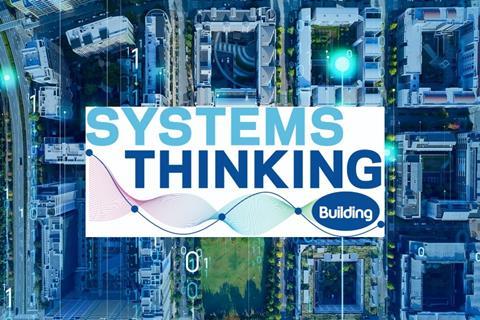
Over the coming months, the Building Systems Thinking content programme will run analysis, opinion, explainers, case studies, reports and events.
To find out more about editorial opportunities contact andrew@mylius.co and for partnership opportunities contact cameron.marshall@assemblemediagroup.co.uk


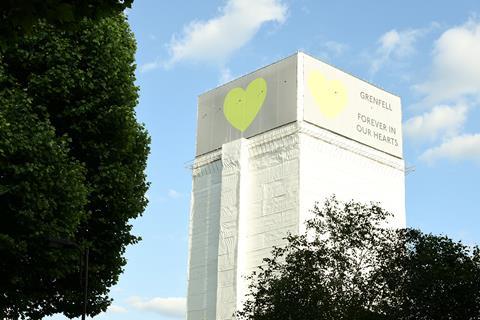





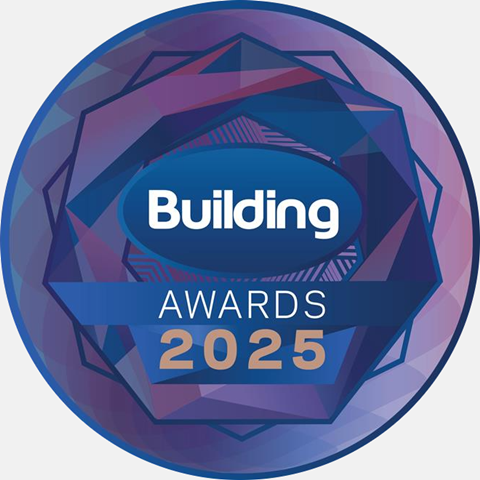
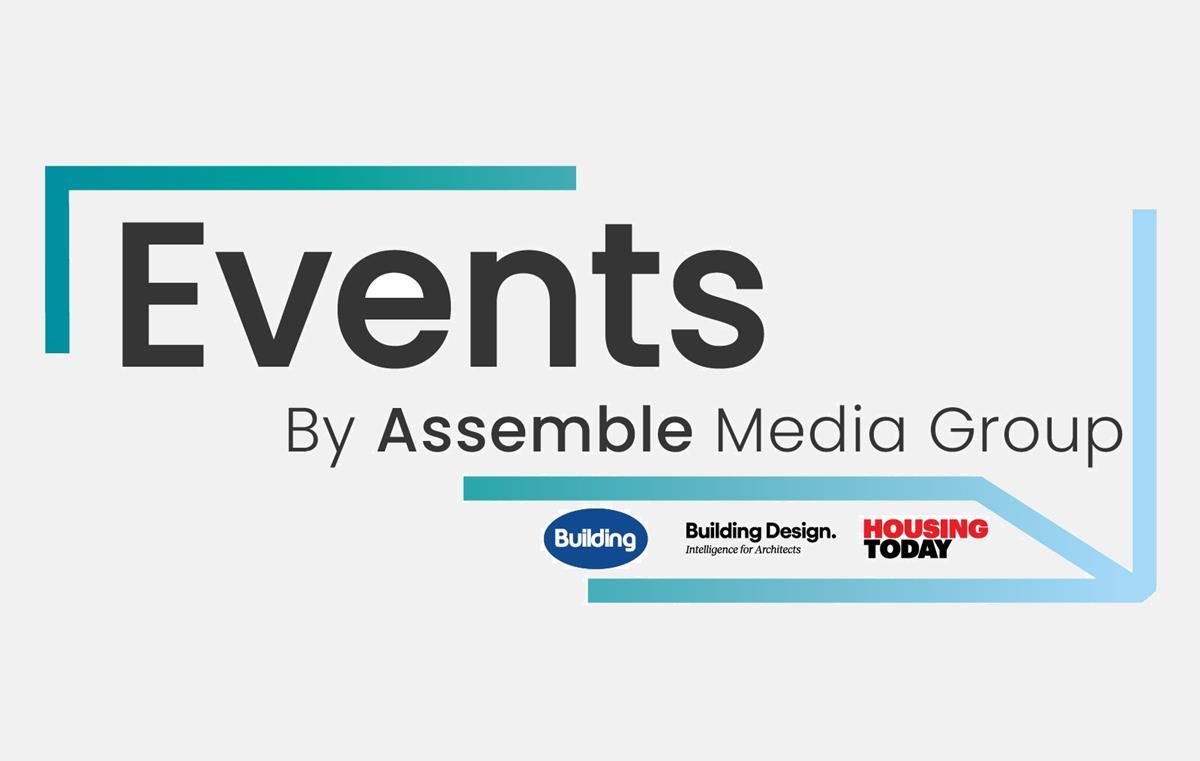




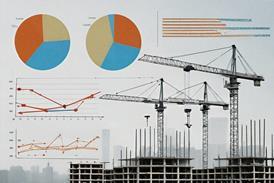


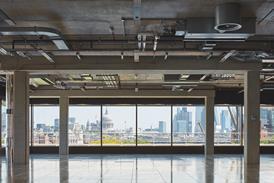

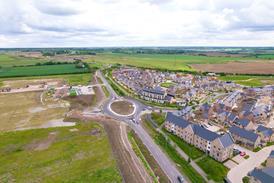







No comments yet